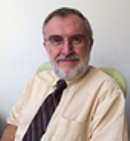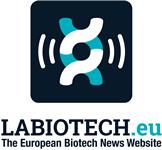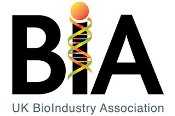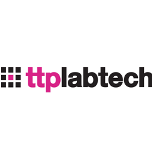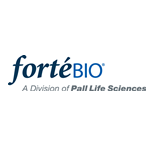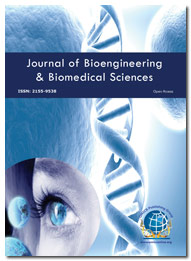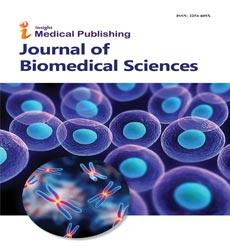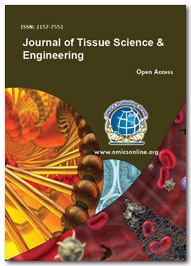Theme: “Systems and Synthetic Biology- Accomplish Impossible to Possibleâ€
Systems and Synthetic Biology 2016
Conferences Series LLC invites all the participants from all over the world to attend 2nd International Conference on Systems and Synthetic Biology August 18-20, 2016 London, UK which includes prompt keynote presentations, Oral talks, Poster presentations and Exhibitions.
Synthetic genomics is an early field of engineered science that uses parts of hereditary alteration on prior life frames with the plan of delivering some item or wanted conduct with respect to the living thing so made. Synthetic genomics joins strategies for the fake amalgamation of DNA with computational methods to plan it. These strategies permit researchers and specialists to build hereditary material that would be inconceivable or illogical to deliver utilizing more routine biotechnological approaches. For instance, utilizing manufactured genomics it is conceivable to outline and amass chromosomes, qualities and quality pathways, and even entire genomes.
Related Conferences:
4th International Conference on Integrative Biology, July 18-20, 2016, Berlin, Germany; International Conference on Genetic Counseling and Genomic Medicine, August 11-12, 2016, Birmingham, UK; International Conference on Clinical and Molecular Genetics, November 28-30, 2016, Chicago, USA; 6th International Conference on Genomics & Pharmacogenomics, September 12-14, 2016, Berlin, Germany; International Conference on Synthetic Genomes, July 8-9, 2016, Edinburgh, Scotland; Conference on Genome Engineering and Synthetic Biology: Tools And Technologies, January 28-29, 2016, Ghent, Belgium; Conference on Synthetic Biology: Engineering, Evolution & Design (SEED), July 18-21, 2016, Chicago, Illinois, USA.
Plan and development of Synthetic gene network from secluded segments is a noteworthy objective of engineered science. Nonetheless, the development of quality systems with unsurprising capacities remains hampered by an absence of suitable segments and the way that amassed arranges regularly require broad, iterative retrofitting to function as proposed. Propels in the improvement of atomic devices for the inducible control of interpretation, interpretation, and protein debasement are the premise for the quickly developing configuration and development of engineered quality systems in mammalian cells. Nonetheless, progresses in manufactured science have been constrained by an absence of interoperable parts, strategies for powerfully testing organic frameworks and systems for the solid development and operation of mind boggling, higher-request systems. As these difficulties are tended to, manufactured scholars will have the capacity to develop helpful cutting edge engineered quality systems with certifiable applications in prescription, biotechnology, bioremediation and bioenergy. Artificial gene synthesis amalgamation is a strategy in Synthetic Biology that is utilized to make artificial genes in the research facilities.
Related Conferences:
4th International Conference on Integrative Biology, July 18-20, 2016, Berlin, Germany; International Conference on Genetic Counseling and Genomic Medicine, August 11-12, 2016, Birmingham, UK; International Conference on Clinical and Molecular Genetics, November 28-30, 2016, Chicago, USA; 6th International Conference on Genomics and Pharmacogenomics September 12-14, 2016, Berlin, Germany; Conference on Diffraction Methods in Structural Biology, July 17-22, 2016, Lewiston, Maine, USA; Conference on DNA Damage, Mutation and Cancer, March 12-13, 2016, Ventura, CA, Conference on Drug Carriers in Medicine and Biology, August 17-22, Waterville valley, New Hampshire; Conference on Single Molecule Approaches to Biology, July 2-3, 2016, Hong Kong, China; Conference on Drug Carriers in Medicine & Biology, July 2-3, 2016, Hong Kong, China.
Gene synthesis is a strategy in synthetic biology that is utilized to make create artificial genes in the research center. Currently based on solid-phase DNA synthesis, it contrasts from molecular cloning and polymerase chain reaction (PCR) in that the client does not need in the first place prior DNA sequences. Accordingly, it is conceivable to make a totally synthetic double-stranded DNA molecule with no obvious cutoff points on either nucleotide sequence or size. The technique has been utilized to create utilitarian bacterial or yeast chromosomes containing around one million base sets. Late research likewise proposes the likelihood of making novel nucleobase pairs notwithstanding the two base pairs in nature, which could incredibly extend the likelihood of growing the genetic code. Gene editing or genome editing with built nucleases (GEEN) is a sort of genetic engineering in which DNA is inserted, deleted or replaced in the genome of an organism utilizing engineered nucleases, or "molecular scissors." These nucleases create site-specific double-strand breaks (DSBs) at craved areas in the genome. The induced double strand breaks are repaired through nonhomologous end-joining (NHEJ) or homologous recombination (HR), bringing about targeted mutations. There are at present four groups of engineered nucleases being utilized: Meganucleases, Zinc finger nucleases (ZFNs), Transcription Activator-Like Effector-based Nucleases (TALENs), and the CRISPR-Cas System.
Related Conferences:
7th Conference on Next Generation Sequencing, November 12-13, 2016, London, UK; 6th Conference on Next Generation Sequencing, May 25-26, 2016 Boston, USA; Conference on Epigenomics and Novel Therapeutic Targets May 26-27, 2016 Boston, USA; International Conference on Biochemistry, October 13-15, 2016 Kuala Lumpur, Malaysia; Conference on Amino Acids and Proteins, December 08-09, 2016, Baltimore, USA; 5th International Conference on Computational Systems Biology, August 22-23, 2016, Philadelphia, USA; 5th International Conference on Metabolomics, May 16-18, 2016, Osaka, Japan; International Conference on Structural Biology, June 23-24, 2016 New Orleans, USA; 6th International Conference on Bioinformatics, March 29-30, 2016, Valencia, Spain.
Structural biology is a branch of molecular biology, biochemistry, and biophysics concerned with the molecular structure of biological macromolecules, especially proteins and nucleic acids, how they secure the structures they have, and how modifications in their structures influence their capacity. This subject is of incredible enthusiasm to researcher since macromolecules complete the vast majority of the elements of cells, and on the grounds that it is just by curling into particular three-dimensional shapes that they can perform these functions. This engineering, the "tertiary structure" of molecule, depends complicatedly on the primary structures.
Relevant Conferences:
International Conference on Applied Crystallography, October 17-19, 2016, Houston, USA; Conference on Membrane Proteins, January 19-20, 2016, San Diego, USA; 7th International Conference on Proteomics, October 24-26, 2016, Rome, Italy; 3rd International Conference on Big Data Analysis and Data Mining, September 26-28, 2016 London, U.K; 5th International Conference on Computational Systems Biology, August 22-23, 2016, Philadelphia, USA; Conference on Membrane Transport Proteins, June 12-17, 2016, Lucca (Barga), Italy; Conference on Protein Folding Dynamics, January 10-15, 2016, Galveston, USA.
As name "Integrative Biology" reflects conviction that the investigation of biological systems is best drawn nearer by fusing numerous points of view. We unite assorted qualities of controls that supplement each other to disentangle the complexity of biology. The idea incorporates anatomy, physiology, cell and stem cell biology, molecular biology, developmental biology, biochemistry and biophysics. We work with animals, plants and microorganisms and our exploration traverses the levels of the organic chain of command from molecules to ecosystems. Our expansive scope of mastery incorporates: geneticists, paleontologists, physiologists, behaviorists, systematists, morphologists, microbiologists, bioinformatician, evolutionary biologists, ecologists, biophysicists and biotechnologists.
Relevant Conferences:
5th International Conference on Metabolomics, May 16-18, 2016 Osaka, Japan; 4th International Conference on Clinical Microbiology and Microbial Genomics, October 05-07, 2015 Philadelphia, USA; Conference on Cancer Genomics, 2016 August 08-09, 2016 Las Vegas, USA; 2nd International Conference on Brain Disorders and Therapeutics, October 27-29, 2016, Chicago, USA; International Conference on Clinical and Molecular Genetics, November 28-30, 2016, Chicago, USA; Conference on Computational biology Genomes to Systems, June 19-23, 2016, Heidelberg, Germany; Conference on Computational Genomics, October 18-24, 2015, Berlin, Germany; Conference on Bioinformatics Models, Methods and Algorithms, February 21-23, 2016, Rome, Italy; Conference on Bioinformatics and Genome Analyses, May 02-14, 2016, Izmir, Turkey; Conference on Computational Molecular Evolution Conference, May 08-19, 2016, Heraklion, Greece.
Protein engineering is the procedure of creating helpful or profitable proteins. It is a youthful control, with much research occurring into the comprehension of protein folding and acknowledgment for protein design principles. There are two general systems for protein engineering, rational protein design and directed evolution. These systems are not fundamentally unrelated; specialists will frequently apply both. Later on, more itemized learning of protein structure and capacity, and also headways in high-throughput innovation, might incredibly grow the abilities of protein engineering. In the long run, even unnatural amino acids might be incorporated, because of another strategy that permits the consideration of novel amino acids in the genetic code.
Relevant Conferences
Annual Conference on Biomaterials, March 14-16, 2016, London, UK; 2nd International Conference on Synthetic Biology, August 15-17, 2016, London, UK; 6th International Conference on Proteomics, March 29-30, 2016, Atlanta, USA; International Conference on Biochemistry, October 13-15, 2016 Kuala Lumpur, Malaysia; International Conference on Nucleic Acids, August 04-06, 2016, Seattle, USA; Conference on Proteins and Antibodies, April 18-19, 2016, London, UK; Gordon Research Conference on Protein Folding Dynamics, January 10-15, 2016, Texas, USA; 18thInternational Conference on Protein-Protein Interactions January 07-08, 2016 Singapore; Gordon Research Conference on Protein Processing, Trafficking and Secretion, July 2016, New Hampshire, USA.
Industrial Systems and Synthetic Biology
Industrial Systems and Synthetic Biology is a standout amongst the most encouraging new ways to deal with contamination counteractive action, asset protection, and cost lessening. It is frequently alluded to as the third wave in biotechnology. On the off chance that created to its maximum capacity, modern biotechnology might largely affect the world than human services and agriculture biotechnology. It offers organizations an approach to diminish costs and make new markets while securing the earth. Additionally, since a hefty portion of its items don't require the long audit times that medication items must experience, it's a speedier, less demanding pathway to the business sector. The utilization of Industrial Systems and Synthetic Biology to modern procedures is changing how we make items as well as giving us new items that couldn't be envisioned a couple of years back. Since Industrial Systems and Synthetic Biology is so new, its advantages are still not surely understood or comprehended by industry, policymakers, or customers.
Relevant Conferences
4th International Conference on Bioprocess and Biosystems Engineering, October 20-21, 2016, Houston, USA; 11th Euro Conference on Biotechnology, November 7-9, 2016, Alicante, Spain; Conference on Biomass October 10-12, 2016 Dubai, UAE, 12th Conference on Biotechnology, November 14-15, 2016 San Francisco, USA; 11th Euro Conference on Biotechnology, November 7-9, 2016 Alicante, Spain; Conference on Biotechnology World Convention, August 15-17, 2016 Sao Paulo, Brazil; 13th World Conference on Industrial Biotechnology, April 17-20, 2016, San Diego; International Conference on Advances In Bioprocess Engineering And Technology, January 20-22, 2016, Kolkata, India; 4th Conference on Biotechnology World Congress, February 15 th - 18th, 2016, Sharjah, UAE.
Biotechnology advances is the utilization of systems and organisms to create or make product, or any innovative application that uses biological, living organism’s forms or derivatives thereof, to make or alter products or procedures for particular use. Depending on the instruments and applications, it regularly covers with the (related) fields of bioengineering, biomedical building, biomanufacturing, and so forth.
Relevant Conferences:
5th International Conference on Biodiversity, March 10-12, 2016, at Madrid, Spain; International Conference on Biotechnology and Environmental Management, September 14-15, 2016, Milan, Italy; 6th World Congress on Biotechnology, October 05-07, 2016, New Delhi India; 10th Asia Pacific Biotech Congress July 25-27, 2016, Bangkok, Thailand; 2nd Conference on Industrial Biotechnology, July 28-29, 2016, Berlin, Germany; 12th Biotechnology Congress, Nov 14-15, 2016, San Francisco, USA; International Conference on Green Energy, September 21-23, 2015 Orlando, FL, USA; International Conference on Environment, Energy and Biotechnology, May 25, 2016 Jeju Island, Republic of Korea; International Conference on Environmental Science and Technology 14-17 May, 2016, Antalya, Turkey.
Metabolomics is the experimental investigation of concoction procedures including metabolites. In particular, metabolomics is the deliberate investigation of the exceptional substance fingerprints that particular cell forms desert, the investigation of their little molecules metabolite profiles. The metabolome speaks to the accumulation of all metabolites in a biological cell, tissue, organ or living being, which are the end products of cell processes. mRNA quality expression data and proteomic examinations uncover the set of gene products being created in the cell, data that speaks to one part of cell function. On the other hand, metabolic profiling can give an immediate depiction of the physiology of that cell. One of the difficulties of system biology and functional genomics is to integrate proteomic, transcriptomic, and metabolomic data to give a superior comprehension of cell biology.
Relevant Conferences:
7th International Conference on Biomarkers and Clinical Research, November 28-30, 2016, Baltimore, USA; 6th International Conference on Proteomics, March 29-30, 2016, Atlanta, USA; 5thInternational Conference on Computational Systems Biology, August 22-23, 2016 Philadelphia, USA; 2nd International Conference on Current Trends in Mass Spectrometry May 09-11, 2016 Chicago, USA; 6thInternational Conference on Genomics and Pharmacogenomics, September 22-24, 2016, Berlin, Germany; The Personalized Medicine World Conference (PMWC) May 11-13, 2016, San Francisco, USA; 17th International Meeting: Cell and Molecular Biology Of Chlamydomonas, June 26-July 1, 2016, Kyoto, Japan; 18th International Conference on Genetics and Molecular Biology, October 10-11 2016, Osaka, Japan; 13th International Congress of Human Genetics, April 3-7 2016, Kyoto, Japan.
Biophysics covers the natural association, from the atomic level to entire life forms level in a biological processes. It depicts how creatures get sustenance, imparting, detecting nature, and repeating. Biophysical research requires some crucial standards from natural chemistry, nanotechnology, bioengineering, computational science and frameworks science.
Related Conferences:
International Conference on Quantum Physics and Nuclear Engineering, March 14-16, 2016 London, UK; Annual Pediatric Emergency Medicine Conference March 29-31, 2016, Atlanta, USA; International Conference on Transplantation Research and Techniques March 28-29, 2016 Atlanta, USA; 6th International Conference on Proteomics, March 29-30, 2016 Atlanta, USA; 2nd International Conference on Sports Medicine and Fitness, April 18-20, 2016 Dubai, UAE; 4th International Conference on Food Oral Processing, July 03-06, 2016, Lausanne, Switzerland; 19th International Union of Pure and Applied Biophysics July 16-20, 2017, Edinburgh, United Kingdom; EMBO Conference on Retinal proteins October 02-07, 2016, Potsdam, Germany; Integrative modelling of biomolecular interactions, July 04-09, 2016, Barcelona, Spain; The Physics of Soft and Biological Matter, April 06-08, 2016, Cambridge, United Kingdom.
Bio-Sensors and Bio-Electronics
A biosensor is an analytical device, used for the detection of an analyte,that combines a biological component with a physicochemical detector. Electrochemical biosensors are normally based on enzymatic catalysis of a reaction that produces or consumes electrons (such enzymes are rightly called redox enzymes). The sensor substrate usually contains three electrodes; a reference electrode, a working electrode and a counter electrode. Amperometric biosensors function by the production of a current when a potential is applied between two electrodes. They generally have response times, dynamic ranges and sensitivities similar to the potentiometric biosensors. The potentiometric biosensor, (potential produced at zero current) gives a logarithmic response with a high dynamic range. Such biosensors are often made by screen printing the electrode patterns on a plastic substrate, coated with a conducting polymer and then some protein (enzyme or antibody) is attached. They have only two electrodes and are extremely sensitive and robust. A microbial biosensor is an analytical device which integrates microorganism(s) with a physical transducer to generate a measurable signal proportional to the concentration of analytes.
Related Conferences:
5th International Conference on Biometrics and Biostatistics, September 29 - October 01, 2016, Miami, USA. 6th International Conference on Bioinformatics, March 29-30, 2016, Valencia, Spain. 2nd Global Optometrist Meeting on Laser Technology, July 28-29, 2016, Berlin, Germany; Annual Conference on Biomaterials, March 14-16, 2016 London, UK; 6th Global Experts Meeting on Nano materials and Nanotechnology, April 21-23, 2016, Dubai, UAE; 6th International Conference on Nanotechnology and Biosensors, Amsterdam, Netherlands; Conference on Optical Chemical Sensors and Biosensors, Graz, Austria; Sensors Global Summit, CA, United States. 18thInternational Conference on Enzyme, New York, USA
Next-generation sequencing alludes to non-Sanger-based high-throughput DNA sequencing technologies. Millions or billions of DNA strands can be sequenced in parallel, yielding considerably more throughput and minimizing the requirement for the fragment cloning techniques that are frequently utilized as a part of Sanger sequencing of genomes. DNA sequencing industry is sectioned into instruments and consumables, administrations, and workflow products.
Relevant Conferences:
Conferecnce on Maintenance of Genome Stability, March 7-10, 2016, Panama; Conference on Mechanisms of Recombination May 16-20, 2016, Alicante, Spain; Conference on Dynamic DNA and RNA Structures in Damage Responses and Cancer Cancun, Mexico; International Conference on Biochemistry, October 13-15, 2016, Kuala Lumpur, Malaysia; World Congress on Amino Acids and Proteins, December 08-09, 2016, Baltimore, USA; 5th International Conference on Computational Systems Biology, August 22-23, 2016, Philadelphia, USA; 5th International Conference on Metabolomics, May 16-18, 2016, Osaka, Japan; 6th International Conference on Bioinformatics, March 29-30, 2016, Valencia, Spain; International Conference on Structural Biology, June 23-24, 2016, New Orleans.
Computational biology includes hypothetical strategies, mathematical and computational reenactment procedures to investigation of biological and social frameworks. The field is incorporates establishment in computer science, animation, biochemistry, biophysics, molecular biology, genetics, genomics, ecology, evolution, anatomy, neuroscience and visualization computational biology. Here and there alluded to as bioinformatics, is the investigation of utilizing natural information to create calculations and relations among different organic frameworks. Preceding the approach of computational biology, researcher were not able have entry to a lot of data. Systems Biology concentrates on analytical and computational models that are unequivocally bolstered and propelled by genuine biological systems and that incorporate current exact learning.
Relevant Conferences:
5th International Conference on Metabolomics, May 16-18, 2016, Osaka, Japan; Conference on Cancer Genomics, August 08-09, 2016, Las Vegas, USA; 2nd International Conference on Brain Disorders and Therapeutics, October 27-29, 2016, Chicago, USA; International Conference on Clinical and Molecular Genetics, November 28-30, 2016, Chicago, USA; Conference on Computational biology Genomes to Systems, June 19-23, 2016, Heidelberg, Germany; Conference on Bioinformatics Models, Methods and Algorithms, February 21-23, 2016, Rome, Italy; Conference on Bioinformatics and Genome Analyses, May 02-14, 2016, Izmir, Turkey; Conference on Computational Molecular Evolution, May 08-19, 2016, Heraklion, Greece.
The pharmaceutical biology is a gathering of interdisciplinary zones of study concerned with the desigin, activity, delivery, and disposition of drugs. Applying the knowledge from chemistry such as inorganic, physical, biochemical and analytical from one end and from another end of Biology is dealing with life structures, physiology, organic chemistry, cell science, and molecular biology, epidemiology, statistics, chemometrics, mathematics, physics, and chemical engineering. As new disclosures progress and amplify the pharmaceutical biology, subspecialties keep on being added to this list. These shared fundamental concepts further to the understanding of their applicability to all aspects of pharmaceutical research and drug therapy.
Related Conferences:
7th Bioavailability and Bioequivalence: BA/BE Studies Summit, August 29-31, 2016, Atlanta, USA; Conference on Pharma, August 29-31, 2016, Sao Paulo, Brazil; 6th Conference on Pharmaceutical Regulatory Affairs and IPR September 12-14, 2016, San Antonio, USA; 4th Conference on Neuropharmacology, September 15-17, 2016, San Antonio, USA; 7th European Congress of Pharmacology by the Federation of European Pharmacological Societies and the Turkish Pharmacological Society, June 26 - 30, 2016, Istanbul, Turkey; 29th Congress of the European College of Neuropsychopharmacology (ECNP), September 11 - 20, 2016, Vienna, Austria; Conference on Pharmacology 2016, sponsored by the British Pharmacological Society, December 13 - 15, 2016, London, United Kingdom; CPPM 2016 : International Conference on Pharmacology and Pharmaceutical Medicine, Feb 11-12, 2016 Kuala Lumpur, Malaysia.
ConferenceSeries Ltd welcomes you to attend the International Conference on Systems and Synthetic Biology during August 18-19, 2016 London, UK. We cordially invite all the participants who are interested in sharing their knowledge and research in the arena of Systems and Synthetic Biology. Systems and Synthetic Biology-2016 anticipates more than 300 participants around the globe with thought provoking Keynote lectures, Oral and Poster presentations. The attending delegates include Editorial Board Members of related OMICS Group Journals. This is an excellent opportunity for the delegates from Universities and Institutes to interact with the world class Scientists. The intending participants can confirm their participation by registering for the conference along with your colleagues.
Systems and Synthetic Biology 2016 is a relatively new field in biomedical research. It focuses on engineering new or modified signaling proteins to create desired signaling pathways in the cell. Every living cell is an extremely complex machine expressing thousands of different proteins. Due to superb regulation, many cells, such as photoreceptors and other neurons in vertebrates, can live for decades. Cells can also self-reproduce by division, where both daughter cells are perfectly viable. Natural selection (the “blind watchmaker”, to use Dawkins’ expression) spent hundreds of millions of year to achieve this perfection. Due to elucidation of the intricacies of cellular regulatory mechanisms we can now play evolution on our time scale: re-design proteins and signaling pathways to achieve our ends.
Systems and Synthetic Biology is a novel field that finds its origin at the intersection of biology and engineering. It involves designing and construction of biological systems or devices that can be applied in varied domains to get specified results. It’s a multidisciplinary effort made by scientists to understand the functioning of biological organisms, cells & genes and implementation of artificial genetic processes to give specific characteristics to an organism. It can even be used to develop a completely new biological system. Global systems and synthetic Biology market was valued at $3.0 billion in 2013 and it is estimated to reach $38.7 billion by 2020, growing at a CAGR of 44.2% during the forecast period
About Systems and Synthetic Biology 2016
Systems and Synthetic Biology is all about increased genome sequencing efforts have ushered in a new era of systems biology, in which entire cellular networks are analyzed and optimized for application in the development of strains and Bioprocesses. The properties of these complex cellular networks cannot be understood by monitoring individual components alone, but from the integration of non-linear gene, protein, and metabolite interactions across multiple metabolic and regulatory networks via computer simulation.
"Synthetic biology is an emerging area of research that can broadly be described as the design and construction of novel artificial biological pathways, organisms or devices, or the redesign of existing natural biological systems."
The demand for synthetic biology is likely to increase owing to the increasing R&D expenditure in pharmaceutical and biotechnology companies, growing demand for synthetic genes, rising production of genetically modified crops, and incessantly rising funding in the field of synthetic biology. Furthermore, rising concerns over fuel consumption and increasing demand for protein therapeutics are likely to create opportunities for the synthetic biology market. However, standardization and integration of biological parts at system-level still remains a challenge for the market. Synthetic Biology mainly focusses on the Universities, Institutes and major Societies along with the latest trends in the market of Systems and Synthetic Biology.
We are delighted to invite you all to attend and register for the “2nd International Conference on Systems and Synthetic Biology (Systems and Synthetic Biology 2016)” which is going to be held during August 18-20, 2016 London, UK.
The organizing committee is gearing up for an exciting and informative conference program including plenary lectures, symposia on a variety of topics, poster presentations and various programs for participants from all over the world. We invite you to join us at the Systems abd Synthetic Biology 2016, where you will be sure to have a meaningful experience with scholars from around the world. All members of the Systems and Synthetic Biology 2016 organizing committee look forward to meeting you in London, UK.
For more details please visit- http://syntheticbiology.conferenceseries.com/
Importance & Scope:
Synthetic Biology 2016 is a relatively new field in biomedical research. It focuses on engineering new or modified signaling proteins to create desired signaling pathways in the cell.
Every living cell is an extremely complex machine expressing thousands of different proteins. Due to superb regulation, many cells, such as photoreceptors and other neurons in vertebrates, can live for decades. Cells can also self-reproduce by division, where both daughter cells are perfectly viable. Natural selection (the “blind watchmaker”, to use Dawkins’ expression) spent hundreds of millions of year to achieve this perfection. Due to elucidation of the intricacies of cellular regulatory mechanisms we can now play evolution on our time scale: re-design proteins and signaling pathways to achieve our ends.
Scientifically, the success of these endeavors is the ultimate proof that we know enough about cellular signaling pathways to harness them for our purposes. From a practical standpoint, targeted regulation of cell signaling paves the way to real cures of many disorders, genetic and acquired, where before we could only manage the symptoms using small molecules.
Why London?
London is the capital and most populous city of England, United Kingdom and the European Union. With a estimated 2015 population of 8.63 million within a land area of 1,572 km², London is a leading global city, with strengths in the research and development, arts, commerce, education, entertainment, fashion, finance, healthcare, media, professional services, tourism, and transport all contributing to its prominence. It is one of the world's leading financial centres and has the fifth-or sixth-largest metropolitan area GDP in the world depending on measurement.
London is a world cultural capital. It is the world's most-visited city as measured by international arrivals and has the world's largest city airport system measured by passenger traffic. London's 43 universities form the largest concentration of higher education institutes in Europe.
There are more than eight community colleges offering associate’s degrees in system and system and synthetic biology, biomedical, advanced molecular biology, bioinformatics and next generation genetics. The city also has approximately a 2 accredited with bachelors and master’s degree programs in system and system and synthetic biology, biomedical, advanced molecular biology, bioinformatics.
Conference Highlights:
- Synthetic Genomics
- Design and construction of Synthetic Gene Networks
- Molecular Modeling and Drug Designing
- Genome Design and Next-generation genomic technologies
- Development of Recombinant-DNA technology
- Protein Engineering Design and Selection
- Advanced DNA Sequencing
- Computational Biology
- Biotechnology and Bioprocess Engineering
- Industrial Biotechnology
- Animal Cell and Tissue Engineering
- Evolutionary Biology
- Novel materials and Biosensors
- Synthetic Biology Trends in Oncology
Why to attend???
Meet the eminent researchers working in the allied areas of Synthetic Biology. This conference will be the best platform to explore your research work and innovations in the respective areas. This conference is focusing on all the major fields of Synthetic Biology.
With members from around the world focused on learning about systems and synthetic biology, this is your single best opportunity to reach the largest assemblage of participants from various communities. Conduct demonstrations, distribute information, meet with current and potential speakers and receive name recognition at this 3-day event. World-renowned speakers, the most recent techniques, tactics, and the newest updates in sstems and synthetic biology fields are hallmarks of this conference.
Major Synthetic Biology Associations around the Globe
The International Association Synthetic Biology (IASB)
Synthetic Biology Organization
Industry Association of Synthetic Biology (IASB)
The Helmholtz Association, Germany
Association of Synthetic Biology Brawijaya University
Society for Biological Engineers (SBE)
ISEE – International Society for Environmental Ethics
MIT Synthetic Biology Center
American Chemical Society
Biotechnology industrial organization
International Council for the Life Sciences
Synthetic Biology Engineering Research Center
University of Minnesota Synthetic Biology Society
Queen's Synthetic Biology Organization (QSYNBIO)
Synthetic Biology Industry Association
New York synthetic biology association – GuideStar
Major Synthetic Biology Associations in UK
BBSRC (Biotechnology and Biological Sciences Research Council)
The Oxford University Society for Synthetic Biology
The Royal Society
British Science Associations
British Society for Cell Biology
The Research Council funded Networks in Synthetic Biology
Bioindustry Association
New association for synthetic biology, Gates Cambridge
Biochemical Society
Statistical Analysis of Associations
Figure 1: Statistical Analysis
Source: Reference1
Target Audience:
Academicians, Scientists & Business delegates, Experts, Departmental Managers, Vice Presidents/ Directors & Brand Manufacturers/ Marketers of Consumer Products. Solution Providers (digital and mobile technology), Professors and Students from Academia in the study of Synthetic Biology & Technology.
Target Audience:
Academia 60%
Industry 30%
Others 10%
Figure 2: Target Audience
Source: Reference2
Top Universities in London:
Figure 3: Top Universities in Georgia
Source: Reference3
Glance at Market of Advertising and Marketing:
This report studies the global synthetic biology market for the forecast period of 2013 to 2018. This market is expected to reach $5,630.4 million by 2018 from $1,923.1 million in 2013, growing at a CAGR of 24% during the forecast period.
The global synthetic biology market is segmented on the basis of tools, technologies, applications, and geographies.
On the basis of tools, the synthetic biology market is categorized into Xeno-nucleic acids, chassis organisms, oligonucleotides, enzymes, and cloning and assembly kits. The oligonucleotides segment accounted for a major share of the synthetic biology market, by tool, in 2013.
On the basis of technologies, the synthetic biology market is segmented into enabled and enabling technologies. Enabling technologies accounted for a major share of the synthetic biology market in 2013. On the basis of applications, the synthetic biology market is segmented into environmental, medical, and industrial applications. The medical applications segment accounted for a major share of the synthetic biology market in 2013.
The U.K. is the leading country in the synthetic biology market in Europe and is expected to grow at the highest CAGR from 2013 to 2018 on account of huge government investments. For instance, in January 2014, three new multidisciplinary research centers were established for synthetic biology in Bristol, Nottingham, and Cambridge/Norwich. These centers were a result of funding from the Biotechnology and Biological Sciences Research Council (BBSRC) and the Engineering and Physical Sciences Research Council (EPSRC).
Synthetic Biology Product Market Analysis growing at a CAGR of 53.7% during the forecast period.
Synthetic Biology Technology Market Analysis growing at a CAGR of 48.6% during the forecast period.
Synthetic Biology Application Market Analysis is growing segment at a CAGR of 85.2% during the forecast period.
Synthetic Biology Geography Market Analysis is fastest growing segment experiencing a CAGR of 46.4% during the forecast period.
Market Growth of Synthetic Biology Products & Services
Statistics which shows growth in importance of Synthetic Biology Field
Figure 4: Market analysis on Synthetic Biology Products
Source: Reference4
Statistics of Academicians, Researchers and Students working on Synthetic Biology
Figure 5: People
Conference Highlights
- Integrative Biology
- Structural Biology
- Systems and Synthetic Biology
- Synthetic Genomics
- Synthetic Gene Networks
- Gene synthesis
- Systems Biology
- Computational Systems Biology
- Synthetic Chemistry
- Plant Synthetic Biology
- Mammalian Synthetic Biology
- Applications of Synthetic Biology
- Synthetic Engineering
- Cellular Systems Biology
- Synthetic Technology
- Protein Engineering
- Biotechnology Advances
- Metabolomics
- Biophysics
- Next Generation Sequencing
- Bio-Sensors and Bio-Electronics
- Synthetic Biology Business
- Industrial Systems and Synthetic Biology
- Pharmaceutical Biology
To share your views and research, please click here to register for the Conference.
To Collaborate Scientific Professionals around the World
| Conference Date | August 18-20, 2016 | ||
| Sponsors & Exhibitors |
|
||
| Speaker Opportunity Closed | Day 1 | Day 2 | Day 3 |
| Poster Opportunity Closed | Click Here to View | ||
Useful Links
Special Issues
All accepted abstracts will be published in respective Our International Journals.
- Current Synthetic and System Biology-Open Access
- Journal of Bioengineering & Biomedical Science
- Advancements in Genetic Engineering Open Access
Abstracts will be provided with Digital Object Identifier by













